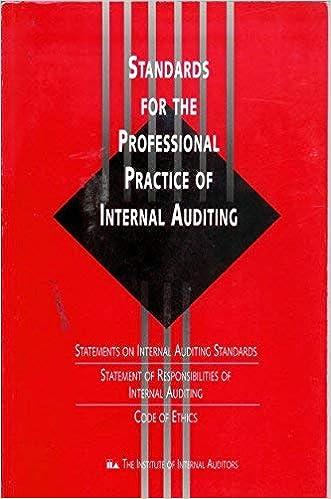Answered step by step
Verified Expert Solution
Question
1 Approved Answer
1. Cost of goods available for sale are: a. Beginning inventory plus net purchases less ending inventory. b. Net sales less gross profit. c. Beginning



1. Cost of goods available for sale are: a. Beginning inventory plus net purchases less ending inventory. b. Net sales less gross profit. c. Beginning inventory plus net purchases. d. Both (a) and (b). 2. Decker Company purchased 2,000 violin bows and has 500 violin bows in its ending inventory at the cost of $80 each and a current replacement cost of $78 each. The ending inventory under the lower of cost or market is: a. S 39,000 b. $ 40,000 c. $ 78,000 d. $ 80,000 3. In periods of rising prices, LIFO will produce: a higher net income than FIFO. c. lower net income than FIFO. b. the same net income as FIFO. d. None of the above. 4. Cost of goods sold plus the cost of ending inventory equals: a. Cost of goods available for sale b. Purchases for the month, if there is no beginning inventory c. Beginning inventory plus cost of purchases for the month d. All of the above 5. Factors that affect the selection of an inventory costing method include: a. lax effects c. income statements effects b. balance sheet effects d. all of the above 6. Match the following accounting principles to their application regarding inventories, cost of sales, and merchandising operations. A. Expense Recognition Principle Prescribes that notes to the financial statements report for Matching Principle) methods of costing inventory, as well as any changes to that method (including justification for the change). B. Cost Principle Prescribes the use of the less optimistic amount of an estimate when two estimates are about equally likely C. Full Disclosure Principle Inventory costs should be recorded against the revenue in the period when the inventory is sold. D. Conservatism Constraint Merchandise inventory costs include any expenditures to bring an item to salable condition and location. E. Materiality Constraint Prescribes that a company uses the same accounting method period after period so that financial statements are comparable across periods. F. Consistency Concept The cost of efforts in assigning incidental costs of acquiring merchandise inventory (cost-to-benefit constraint) outweighs the benefit and/or incidental costs are immaterial. Sales (at retail) Use the following information to answer questions 7 - 9: Date Purchases (at cost) July 3 20 units @ $5 July 10 40 units @ $6 July 11 July 22 30 units @ $7 July 29 20 Units @ $20 10 Units @ $15 Of the 20 units sold on July 11, 15 were from the July 3rd purchase and 5 from the July 10th purchase. The 10 units sold on July 29th were from the July 22nd purchase. 7. Compute ending inventory and cost of goods sold using the FIFO method. 8. Compute ending inventory and cost of goods sold using the LIFO method. 9. Compute ending inventory and cost of goods sold using the weighted average method. Chapter 6 - Practice Test G 200 units Beginning Inventory for June 2020 100 units purchased for $5 each. Purchases during June were as follows: June 15 100 units @ $6 June 20 200 units @ $7 There were two sales during June: June 10 40 units sold for $56 June 25 200 units sold for $75 its sold to.
Step by Step Solution
There are 3 Steps involved in it
Step: 1

Get Instant Access to Expert-Tailored Solutions
See step-by-step solutions with expert insights and AI powered tools for academic success
Step: 2

Step: 3

Ace Your Homework with AI
Get the answers you need in no time with our AI-driven, step-by-step assistance
Get Started


